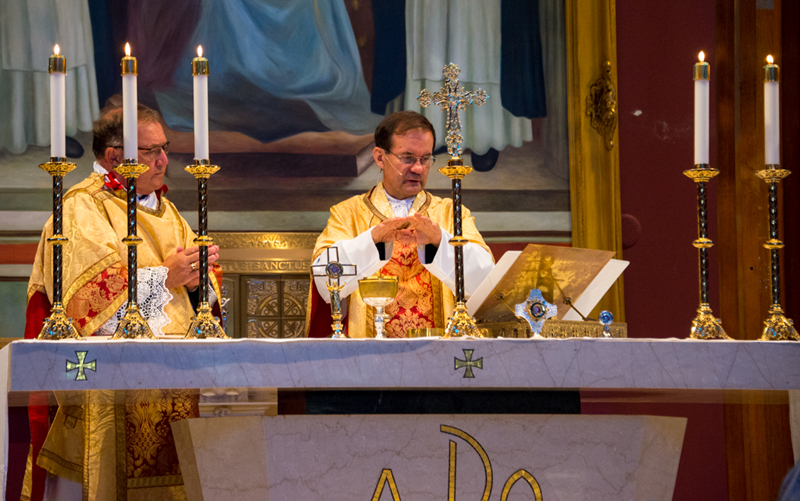Poles honor the Blessed Virgin Mary of Jasna Gora
CHARLOTTE — The seventh annual diocesan Polish Mass was celebrated Aug. 26 at St. Thomas Aquinas Church, which this year fell on the feast day of Our Lady of Czestochowa. Hundreds of Catholics of Polish heritage, as well as parishioners of Anglo, Hispanic, Filipino, Asian and African descent attended the Mass.
Father Matt Nycz, pastor of Blessed Sacrament Church in Tonawanda, N.Y., celebrated the Mass. He was assisted by Deacon James Witulski.
“Today, on Aug. 26, falls the feast day of the Blessed Virgin Mary of Jasna Gora (Bright Hill) in the city of Czestochowa, Poland,” Father Nycz said during his homily. “Poles honor Mary as the Mother, the Queen and the Protectress of the Polish nation. Jasna Gora is seen as the spiritual capital of Poland.
“In the most difficult moments of history, Poles go to Mary, the Mother of God. There are all kinds of annual pilgrimages to that special place from all over Poland and abroad. The best known Polish saints connected to Divine Mercy also went to visit the Black Madonna in Czestochowa,” he noted.
Father Nycz shared that St. Faustina visited Czestochowa on her way to the convent in Vilnius in May 1933, soon after taking her perpetual vows.
“In her Diary, St. Faustina recalls that when her prayers before the Virgin were interrupted by another sister summoning her to breakfast six hours later, ‘...it seemed to me that I had just come ... The Mother of God told me many things. I entrusted my perpetual vows to her. I felt that I was her child and that She was my Mother. She did not refuse any of my requests’ (260).”
He explained that the two other great saints of mercy, St. John Paul II and Blessed Michael Sopocko, whose relics were also present for veneration after the Mass, are closely connected to Black Madonna and St. Faustina. Both were chosen by God to promote the message and devotion of Divine Mercy at different time and different ways.
“God’s mercy is very much needed in the world and the Church today,” Father Nycz said. “It is God’s answer to the evil and senseless suffering of many people caught up in the circle of wars, violence and betrayal.”
He pointed out that the icon of the Black Madonna is unique in its depicting Mary with scars on her face. The tradition holds the scars were a result of a violent assault with a sword by people who attacked the monastery and wanted to destroy the icon. They did not succeed.
Later, despite attempts by painters to cover the scars, they always came back to the surface.
“Her gaze is set straight at us as if inviting us to notice her scars,” Father Nycz said. “At the same time her hand points to her baby Jesus, as if echoing St. Peter from today’s Gospel: ‘Master, to whom shall we go? ...You are the Holy One of God.’”
Prior to Mass, people lined up for hours to receive the sacrament of reconciliation in Polish, English or Spanish.
After Mass, a steady stream of the faithful venerated the first-class relics of the three Apostles of Divine Mercy – St. John Paul II, St. Maria Faustina Kowalska and Blessed Father Michael Sopocko, the spiritual advisor and confessor of St. Faustina. They also enjoyed a reception with traditional Polish food after the liturgy.
— Catholic News Herald. Photos by Doreen Sugierski, correspondent
















